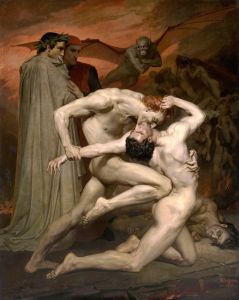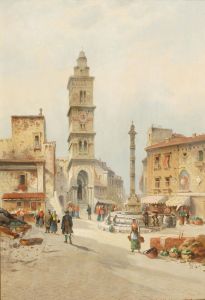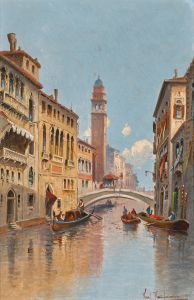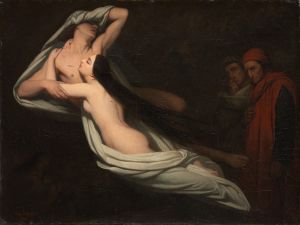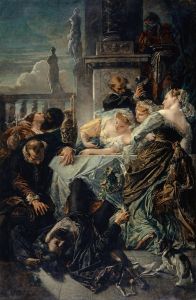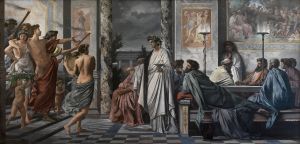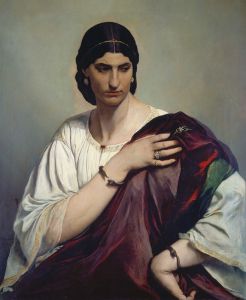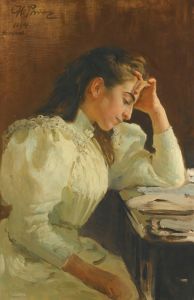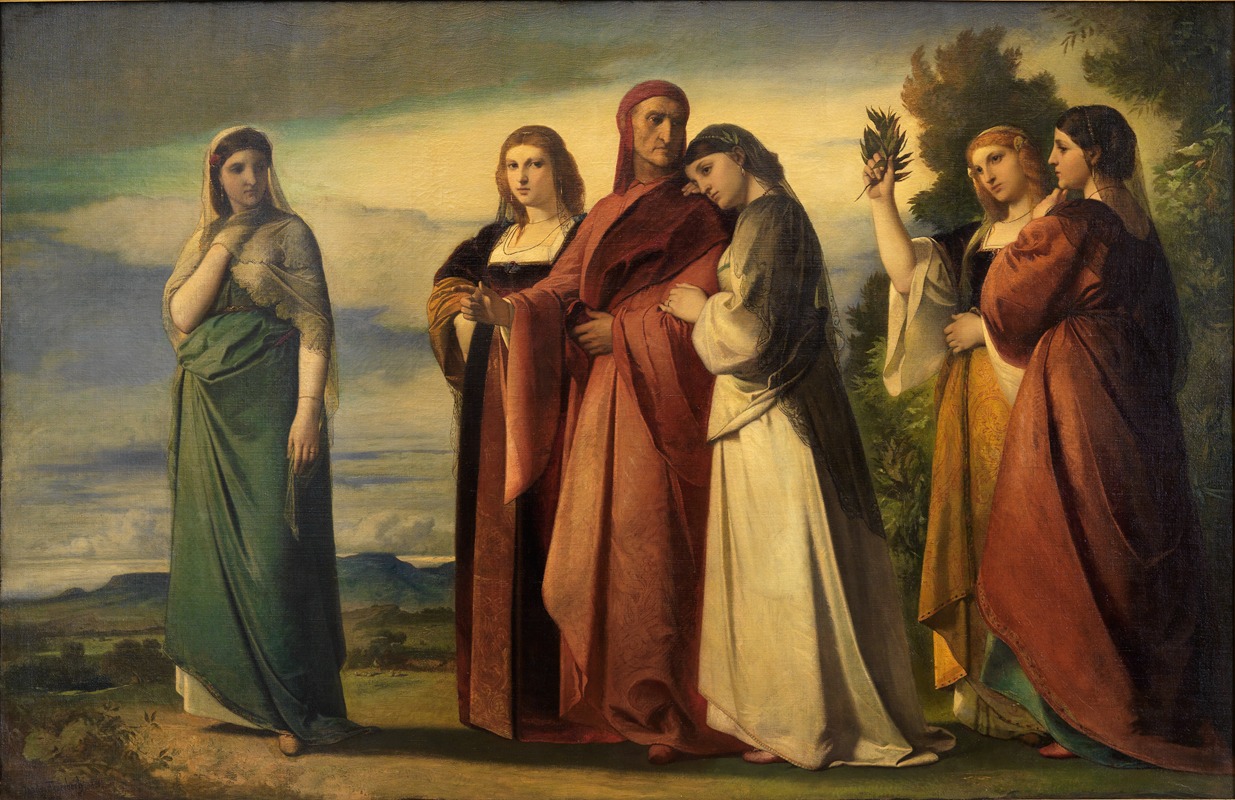
Dante und die edlen Frauen von Ravenna
A hand-painted replica of Anselm Feuerbach’s masterpiece Dante und die edlen Frauen von Ravenna, meticulously crafted by professional artists to capture the true essence of the original. Each piece is created with museum-quality canvas and rare mineral pigments, carefully painted by experienced artists with delicate brushstrokes and rich, layered colors to perfectly recreate the texture of the original artwork. Unlike machine-printed reproductions, this hand-painted version brings the painting to life, infused with the artist’s emotions and skill in every stroke. Whether for personal collection or home decoration, it instantly elevates the artistic atmosphere of any space.
Anselm Feuerbach's painting "Dante und die edlen Frauen von Ravenna" (Dante and the Noble Women of Ravenna) is a notable work by the German painter, who was a prominent figure in the 19th-century art scene. Feuerbach, born in 1829, was known for his classical style and his focus on historical and mythological themes. His works often reflect a deep engagement with literature and history, and "Dante und die edlen Frauen von Ravenna" is no exception.
The painting depicts the Italian poet Dante Alighieri, best known for his epic poem "The Divine Comedy," in the company of noble women from Ravenna. Ravenna holds historical significance as the city where Dante spent the last years of his life and where he completed "The Divine Comedy." The setting of the painting is likely inspired by this connection, reflecting Dante's interactions with the intellectual and cultural figures of his time.
Feuerbach's work is characterized by its classical composition and attention to detail, which can be seen in the way he portrays the figures in the painting. The women are depicted with an air of grace and nobility, reflecting the artist's interest in idealized beauty and the human form. The use of light and shadow in the painting adds depth and dimension, enhancing the overall impact of the scene.
Feuerbach was influenced by the works of the Italian Renaissance, and this influence is evident in "Dante und die edlen Frauen von Ravenna." The painting's composition and the depiction of the figures show a clear inspiration from Renaissance art, particularly in the way the figures are arranged and the emphasis on harmony and balance.
Throughout his career, Feuerbach was associated with the Düsseldorf School of painting, which was known for its detailed and realistic style. However, he later moved to Vienna, where he became a professor at the Academy of Fine Arts. His time in Vienna marked a period of significant artistic development, during which he created some of his most famous works.
"Dante und die edlen Frauen von Ravenna" is a reflection of Feuerbach's mature style, showcasing his ability to blend historical themes with a classical aesthetic. The painting is a testament to his skill in capturing the essence of his subjects and his dedication to portraying historical and literary figures with authenticity and respect.
Feuerbach's work, including this painting, has been influential in the development of German art, and his legacy continues to be appreciated by art historians and enthusiasts alike. His ability to convey complex themes through his art has earned him a lasting place in the history of 19th-century European painting.
In summary, "Dante und die edlen Frauen von Ravenna" is a significant work by Anselm Feuerbach that exemplifies his classical style and his interest in historical and literary subjects. The painting reflects the artist's skill in composition and his ability to bring historical figures to life through his art.





